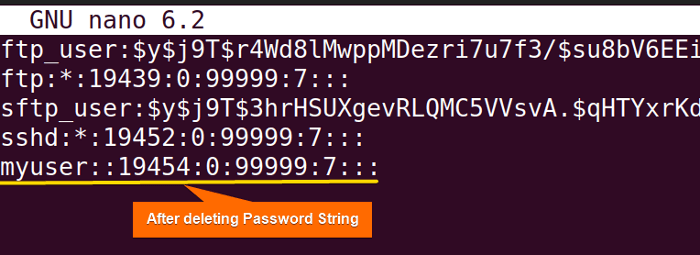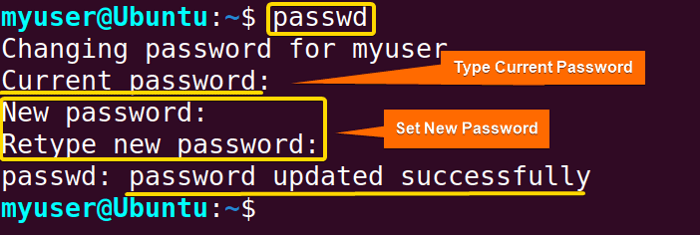Deleting the user password can remove the hassle of entering a password every time. Moreover, if a user forgets his password and requests to reset the password deleting the existing password is also necessary. In this article, I will show you how to delete the password of a user in Ubuntu.
Process flow chart to delete the user password in Ubuntu: Distro Used Throughout the Tutorial: Ubuntu 22.04.1 LTS
Distro Used Throughout the Tutorial: Ubuntu 22.04.1 LTS
My Ubuntu has a user by the name of “myuser”. In this section, I will show you how to delete the user password of a user who is in this case “myuser” in Ubuntu by using three different methods. You can read our Comparative Analysis of Methods to distinguish between these three methods and best pick one for your need. At first, I will use the passwd command to delete the password of the user “myuser”: Now I will use the usermod command to delete the password of the user “myuser”: In this method, I will delete the user’s password from the shadow file. The shadow file is a text file that contains information about the system’s users’ passwords. To do the same, follow the below steps: I have deleted the user password using the passwd command, usermod command and shadow file. Here is a comparison between these three methods. Setting a password expiry date helps to improve the security of user accounts. It also encourages users to change their password regularly. To set the password expiry date, follow the steps shown below: Changing passwords on regular basis is necessary. It protects the accounts from unauthorized access. Here I have shown simple ways to change a user password: In this article, I have shown you how to delete a user password in Ubuntu in 3 different ways with comparative analysis, so that choose which one suits you better. In addition, I have provided some complementary information. Moreover, you should check out the questions below which might be helpful for you. Absolutely. To change the user password in Ubuntu, use the passwd command followed by the user name and prefix with sudo. For example, to change the password for the user walid, open the terminal and type the command The best way to delete users in Ubuntu is using the deluser command. For instance, if you have a user by the name of “creed”, you can use the command To switch users in Ubuntu, open the terminal and type the command su <other_user>. Upon hitting the ENTER button, enter the other_user password when prompted to successfully switch users in Ubuntu. To delete a user with his user ID, you can use the deluser command. For example, if a user’s ID is 1005 then you can use the following command to delete that user To delete user profile, run the command: To delete a user, you need to have admin rights. You can ask the system administrator to grant you sudo privileges. Only then you will be able to delete a user. Related Articles3 Methods to Delete User Password in Ubuntu
Method 01: Using the passwd Command to Delete User Password in Ubuntu
sudo passwd -d myuser

su - myuser

Method 02: Using the usermod Command to Delete User Password in Ubuntu
sudo usermod -p '' myuser
su - myuser

Method 03: Delete User Password from the Shadow File in Linux
sudo cp /etc/shadow /etc/shadow.bksudo nano /etc/shadow


su - myuser

Comparative Analysis of Methods to Delete User Password in Ubuntu
Methods
Pros
Cons
Using the passwd command
Using the usermod command
Using the shadow file
Password Expiry Information Changed in Linux
sudo chage -l myuser

sudo chage -M 120 myuser

sudo chage -l myuser

How to Change User Password in Linux
su - myuser

passwd

Conclusion
People Also Ask
Can I change the user password in Ubuntu?
sudo passwd walid, input the new password and confirm prompted.How to delete user Ubuntu?
sudo deluser –remove-home creed to delete the user with his home directory.How to switch user in Ubuntu?
How to delete user with ID in Ubuntu?
sudo deluser -u 1005How to delete user profile?
sudo deluser –remove-home USERNAME. It will delete the user account with its home directory.How do I Delete a user without admin rights?
FUNDAMENTALS
A Complete Guide for Beginners






where do I request a password reset ?
new user 1 day – already forgot